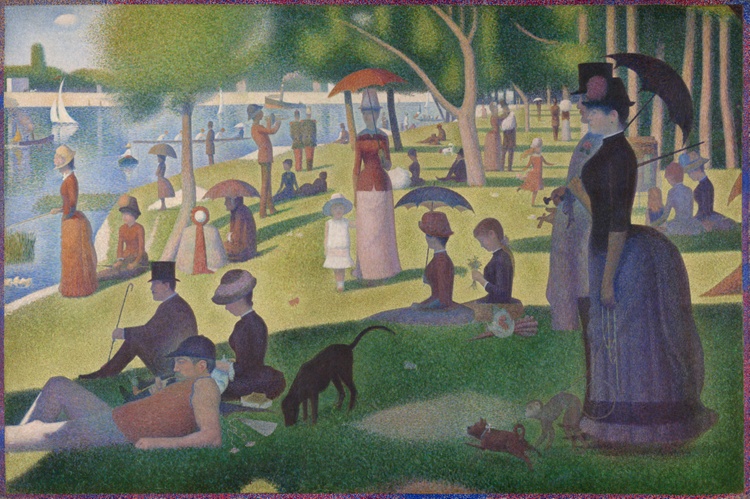Humanities present a wide range of opportunities for those who explore the disciplines of art, literatus, music, or drama. The works of art can combine esthetically pleasing imagery with philosophical messages communicated by their authors. A Sunday Afternoon on the Island of La Grande Jatte is an oil painting created by the French artist Georges Seurat between 1884 and 1886 (Goldstein, 2019). The work demonstrates the artist’s mastery of color theory, his unique pointillism technique, and the search for beauty in banal moments. The following essay will examine the origins of the painting, explain how learning about this work can impact my life and career, and discuss how the discipline of visual art influenced me.
The painting and its context have made a strong impression on me and will help me advance my career and make reasonable life choices. Figure 1 shows the impeccable mastery of Seurat, who used several hundred thousand tiny dots to convey the meaning of the image. The artist developed his unique pointillism technique under the influence of museums, libraries, and people-watching. The monumental painting depicting a popular suburban retreat in Paris was created by Seurat to encourage the viewer to acknowledge the beauty of the park and its motionless visitors (Goldstein, 2019). The work combining Seurat’s experience from painting, observation, and literature on color theory taught me about the value of everyday moments. The artist’s elaborate work and its simple theme imply that beauty is not in action but in the harmony of form, color, and light. The painting motivates me to search for a deeper meaning in life and appreciate ordinary moments. It also reminds me that a profession is not a motionless concept, and I should make efforts to continuously improve my skills.

My personal and academic experience suggests that art influenced me the most. The examination of photography, paintings, or architectural masterpieces inspires me to enhance my artistic skills and express creativity in everyday situations. My pursuit of artistic beauty and the commitment to the philosophy of aesthetics encourages animated discussions with peers, friends, and artists. Moreover, the knowledge of art facilitates my understanding of contexts and hidden messages behind complex artworks. For instance, the genre of minimalism does not reflect the artist’s personal ideas but provides the viewer with the freedom of interpretation and inspires different responses. Thus, the value of the discipline of visual art is its ability to inspire people and provide them with the means of expressing human experiences with the world.
Based on my experience from the course and the examination of the painting by George Seurat, I am confident that the class in humanities will enhance my personal life and career in several ways. First, the overview of different humanity disciplines will help me select the right career path and define my strengths and areas for improvement. Second, the study of diverse works of art will allow me to comprehend philosophical messages conveyed by artists and improve my use of empathy and self-awareness. Third, communication skills advanced during the class will assist me in connecting with other people and establishing positive personal or professional relationships by understanding diverse points of view and approaches. Finally, humanities represent the kind of education that is vital for the development of critical thinking and calibration of a moral compass. Therefore, the set of values learned from the disciplines of philosophy, literature, and art will enhance my intellectual autonomy and ethical decision-making essential for the achievement of academic and career success.
References
Goldstein, J. L. (2019). Seurat’s dots: A shot heard ’round the art world—fired by an artist, inspired by a scientist. Cell, 179 (1), 46–50. Web.
Seurat, G. (1884-1886). A Sunday afternoon on the island of La Grande Jatte [painting]. Art Institute of Chicago, Chicago, IL, United States. Web.